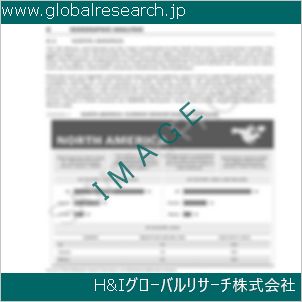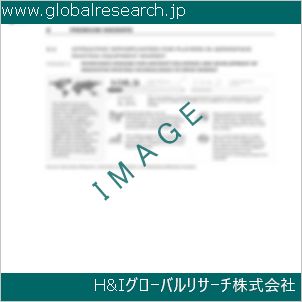Table of Contents
1 Industry Overview of Trans-Stilbene
1.1 Definition and Specifications of Trans-Stilbene
1.1.1 Definition of Trans-Stilbene
1.1.2 Specifications of Trans-Stilbene
1.2 Classification of Trans-Stilbene
1.3 Applications of Trans-Stilbene
1.3.1 Nuclear Application
1.3.2 Non-Nuclear Application
1.4 Industry Chain Structure of Trans-Stilbene
1.5 Industry Overview and Major Regions Status of Trans-Stilbene
1.5.1 Industry Overview of Trans-Stilbene
1.5.2 Global Major Regions Status of Trans-Stilbene
1.6 Industry Policy Analysis of Trans-Stilbene
1.7 Industry News Analysis of Trans-Stilbene
2 Manufacturing Cost Structure Analysis of Trans-Stilbene
2.1 Raw Material Suppliers and Price Analysis of Trans-Stilbene
2.2 Equipment Suppliers and Price Analysis of Trans-Stilbene
2.3 Labor Cost Analysis of Trans-Stilbene
2.4 Other Costs Analysis of Trans-Stilbene
2.5 Manufacturing Cost Structure Analysis of Trans-Stilbene
2.6 Manufacturing Process Analysis of Trans-Stilbene
3 Technical Data and Manufacturing Plants Analysis of Trans-Stilbene
3.1 Capacity and Commercial Production Date of Global Trans-Stilbene Major Manufacturers in 2023
3.2 Manufacturing Plants Distribution of Global Trans-Stilbene Major Manufacturers in 2023
3.3 R&D Status and Technology Source of Global Trans-Stilbene Major Manufacturers in 2023
3.4 Raw Materials Sources Analysis of Global Trans-Stilbene Major Manufacturers in 2023
4 Capacity, Production and Revenue Analysis of Trans-Stilbene by Regions, Types and Manufacturers
4.1 Global Capacity, Production and Revenue of Trans-Stilbene by Regions 2019-2024
4.2 Global and Major Regions Capacity, Production, Revenue and Growth Rate of Trans-Stilbene 2019-2024
4.3 Global Capacity, Production and Revenue of Trans-Stilbene by Types 2019-2024
4.4 Global Capacity, Production and Revenue of Trans-Stilbene by Manufacturers 2019-2024
5 Price, Cost, Gross and Gross Margin Analysis of Trans-Stilbene by Regions, Types and Manufacturers
5.1 Price, Cost, Gross and Gross Margin Analysis of Trans-Stilbene by Regions 2019-2024
5.2 Price, Cost, Gross and Gross Margin Analysis of Trans-Stilbene by Types 2019-2024
5.3 Price, Cost, Gross and Gross Margin Analysis of Trans-Stilbene by Manufacturers 2019-2024
6 Consumption Volume, Consumption Value and Sale Price Analysis of Trans-Stilbene by Regions, Types and Applications
6.1 Global Consumption Volume and Consumption Value of Trans-Stilbene by Regions 2019-2024
6.2 Global and Major Regions Consumption Volume, Consumption Value and Growth Rate of Trans-Stilbene 2019-2024
6.3 Global Consumption Volume and Consumption Value of Trans-Stilbene by Types 2019-2024
6.4 Global Consumption Volume and Consumption Value of Trans-Stilbene by Applications 2019-2024
6.5 Sale Price of Trans-Stilbene by Regions 2019-2024
6.6 Sale Price of Trans-Stilbene by Types 2019-2024
6.7 Sale Price of Trans-Stilbene by Applications 2019-2024
6.8 Market Share Analysis of Trans-Stilbene by Different Sale Price Levels
7 Supply, Import, Export and Consumption Analysis of Trans-Stilbene
7.1 Supply, Consumption and Gap of Trans-Stilbene 2019-2024
7.2 Global Capacity, Production, Price, Cost, Revenue, Supply, Import, Export and Consumption of Trans-Stilbene 2019-2024
7.3 USA Capacity, Production, Price, Cost, Revenue, Supply, Import, Export and Consumption of Trans-Stilbene 2019-2024
7.4 EU Capacity, Production, Price, Cost, Revenue, Supply, Import, Export and Consumption of Trans-Stilbene 2019-2024
7.5 China Capacity, Production, Price, Cost, Revenue, Supply, Import, Export and Consumption of Trans-Stilbene 2019-2024
7.6 Japan Capacity, Production, Price, Cost, Revenue, Supply, Import, Export and Consumption of Trans-Stilbene 2019-2024
8 Major Manufacturers Analysis of Trans-Stilbene
8.1 Manufacturer One
8.1.1 Company Profile
8.1.2 Product Picture and Specifications
8.1.2.1 Type I
8.1.2.2 Type II
8.1.2.3 Type III
8.1.3 Capacity, Production, Price, Cost, Gross and Revenue
8.1.4 Contact Information
8.2 Manufacturer Two
8.2.1 Company Profile
8.2.2 Product Picture and Specifications
8.2.2.1 Type I
8.2.2.2 Type II
8.2.2.3 Type III
8.2.3 Capacity, Production, Price, Cost, Gross and Revenue
8.2.4 Contact Information
8.3 Manufacturer Three
8.3.1 Company Profile
8.3.2 Product Picture and Specifications
8.3.2.1 Type I
8.3.2.2 Type II
8.3.2.3 Type III
8.3.3 Capacity, Production, Price, Cost, Gross and Revenue
8.3.4 Contact Information
8.4 Manufacturer Four
8.4.1 Company Profile
8.4.2 Product Picture and Specifications
8.4.2.1 Type I
8.4.2.2 Type II
8.4.2.3 Type III
8.4.3 Capacity, Production, Price, Cost, Gross and Revenue
8.4.4 Contact Information
8.5 Manufacturer Five
8.5.1 Company Profile
8.5.2 Product Picture and Specifications
8.5.2.1 Type I
8.5.2.2 Type II
8.5.2.3 Type III
8.5.3 Capacity, Production, Price, Cost, Gross and Revenue
8.5.4 Contact Information
…
9 Marketing Trader or Distributor Analysis of Trans-Stilbene
9.1 Marketing Channels Status of Trans-Stilbene
9.2 Traders or Distributors with Contact Information of Trans-Stilbene by Regions
9.3 Ex-work Price, Channel Price and End Buyer Price Analysis of Trans-Stilbene
9.4 Regional Import, Export and Trade Analysis of Trans-Stilbene
10 Industry Chain Analysis of Trans-Stilbene
10.1 Upstream Major Raw Materials Suppliers Analysis of Trans-Stilbene
10.1.1 Major Raw Materials Suppliers with Contact Information Analysis of Trans-Stilbene
10.1.2 Major Raw Materials Suppliers with Supply Volume Analysis of Trans-Stilbene by Regions
10.2 Upstream Major Equipment Suppliers Analysis of Trans-Stilbene
10.2.1 Major Equipment Suppliers with Contact Information Analysis of Trans-Stilbene
10.2.2 Major Equipment Suppliers with Product Pictures Analysis of Trans-Stilbene by Regions
10.3 Downstream Major Consumers Analysis of Trans-Stilbene
10.3.1 Major Consumers with Contact Information Analysis of Trans-Stilbene
10.3.2 Major Consumers with Consumption Volume Analysis of Trans-Stilbene by Regions
10.4 Supply Chain Relationship Analysis of Trans-Stilbene
11 Development Trend of Analysis of Trans-Stilbene
11.1 Capacity, Production and Revenue Forecast of Trans-Stilbene by Regions and Types
11.1.1 Global Capacity, Production and Revenue of Trans-Stilbene by Regions 2024-2029
11.1.2 Global and Major Regions Capacity, Production, Revenue and Growth Rate of Trans-Stilbene 2024-2029
11.1.3 Global Capacity, Production and Revenue of Trans-Stilbene by Types 2024-2029
11.2 Consumption Volume and Consumption Value Forecast of Trans-Stilbene by Regions, Types and Applications
11.2.1 Global Consumption Volume and Consumption Value of Trans-Stilbene by Regions 2024-2029
11.2.2 Global and Major Regions Consumption Volume, Consumption Value and Growth Rate of Trans-Stilbene 2024-2029
11.2.3 Global Consumption Volume and Consumption Value of Trans-Stilbene by Types 2024-2029
11.2.4 Global Consumption Volume and Consumption Value of Trans-Stilbene by Applications 2024-2029
11.3 Supply, Import, Export and Consumption Forecast of Trans-Stilbene
11.3.1 Supply, Consumption and Gap of Trans-Stilbene 2024-2029
11.3.2 Global Capacity, Production, Price, Cost, Revenue, Supply, Import, Export and Consumption of Trans-Stilbene 2024-2029
11.3.3 USA Capacity, Production, Price, Cost, Revenue, Supply, Import, Export and Consumption of Trans-Stilbene 2024-2029
11.3.4 EU Capacity, Production, Price, Cost, Revenue, Supply, Import, Export and Consumption of Trans-Stilbene 2024-2029
11.3.5 China Capacity, Production, Price, Cost, Revenue, Supply, Import, Export and Consumption of Trans-Stilbene 2024-2029
11.3.6 Japan Capacity, Production, Price, Cost, Revenue, Supply, Import, Export and Consumption of Trans-Stilbene 2024-2029
12 New Project Investment Feasibility Analysis of Trans-Stilbene
12.1 New Project SWOT Analysis of Trans-Stilbene
12.2 New Project Investment Feasibility Analysis of Trans-Stilbene
13 Conclusion of the Global Trans-Stilbene (CAS 103-30-0) Industry 2024 Market Research Report
| ※参考情報 トランス-スチルベン(Trans-Stilbene)は、化学式 C14H12 を持つ有機化合物で、主にフラーレンやポリマーの合成、さらには様々な応用領域で重要な役割を果たしています。トランス-スチルベンの化学的特性や用途について、以下に詳述いたします。 まず、トランス-スチルベンは二つのスチルベン環が二重結合でつながった構造を持っており、この二重結合によって異性体が存在します。スチルベンにはシス型とトランス型があり、トランス型が安定な構造を持っています。トランス-スチルベンはその平面状の構造により、非常に安定であり、様々な温度条件下での取扱いにも耐えることができます。 トランス-スチルベンの特徴として、まず第一にその安定性が挙げられます。高温下でも分解することが少なく、化学的特性が安定しているため、実験室や工業的な利用において広く使用されています。次に、この化合物は光学的特性も持っており、特に紫外線を吸収する能力があります。そのため、光学デバイスやセンサーの材料としての利用が期待されています。 さらに、トランス-スチルベンは生物学的な特性にも注目されています。研究によると、抗酸化作用を持つとされ、細胞の老化を遅らせる効果が示唆されています。このため、化粧品や健康食品の成分としての利用も増えてきています。具体的には、スキンケア製品において抗老化成分としての役割が期待されているほか、食品添加物としても使用されることがあります。 トランス-スチルベンは、その合成方法にも多様性があります。最も一般的な合成法は、ベンゼン誘導体からの脱ハロゲン化反応やホフマン重合によるものです。また、最近では、環境に優しい合成法の開発も進行中であり、持続可能な方法での製造が求められています。こうした合成技術は、エコロジカルな視点からも重要であり、今後の化学産業においてますます注目されるでしょう。 さらに、トランス-スチルベンは多くの関連技術に関連しています。光合成材料、センサー、さらにはエレクトロニクス分野においてもその利用が広がっています。特に、ナノテクノロジーの進展により、トランス-スチルベンのナノコンポジット材料としての利用が期待されており、これにより新しい機能性材料の開発が進められています。 用途として、トランス-スチルベンは主に化学合成や材料科学の分野で使用されます。例えば、ポリマーの合成やコーティング材として利用されることが多く、その特性から優れた機械的強度や耐候性を持つ材料が得られます。また、電子デバイスの分野では、有機半導体材料としての利用も試みられています。特にオーガニックトランジスタやディスプレイ技術において、その導電性や光学特性が活かされることが期待されています。 加えて、トランス-スチルベンはその誘導体を介して新たな機能性材料の開発にも寄与しています。たとえば、トランス-スチルベンの誘導体は、医薬品の合成や新たな触媒の開発において重要な役割を持つことがあります。これにより、医療や材料科学といった他分野との融合が進んでいます。 まとめると、トランス-スチルベンはその安定性や光学的特性、さらには生物学的な効果から、幅広い応用が期待される化合物です。合成技術の発展とともに、その利用範囲は拡大し続けており、今後の研究や技術開発においても重要な位置を占めるでしょう。さまざまな分野での応用と、その持続可能な合成方法の開発が進むことで、トランス-スチルベンは化学産業や関連領域においてますます欠かせない存在になっていくと考えられます。 |
❖ 免責事項 ❖
http://www.globalresearch.jp/disclaimer












